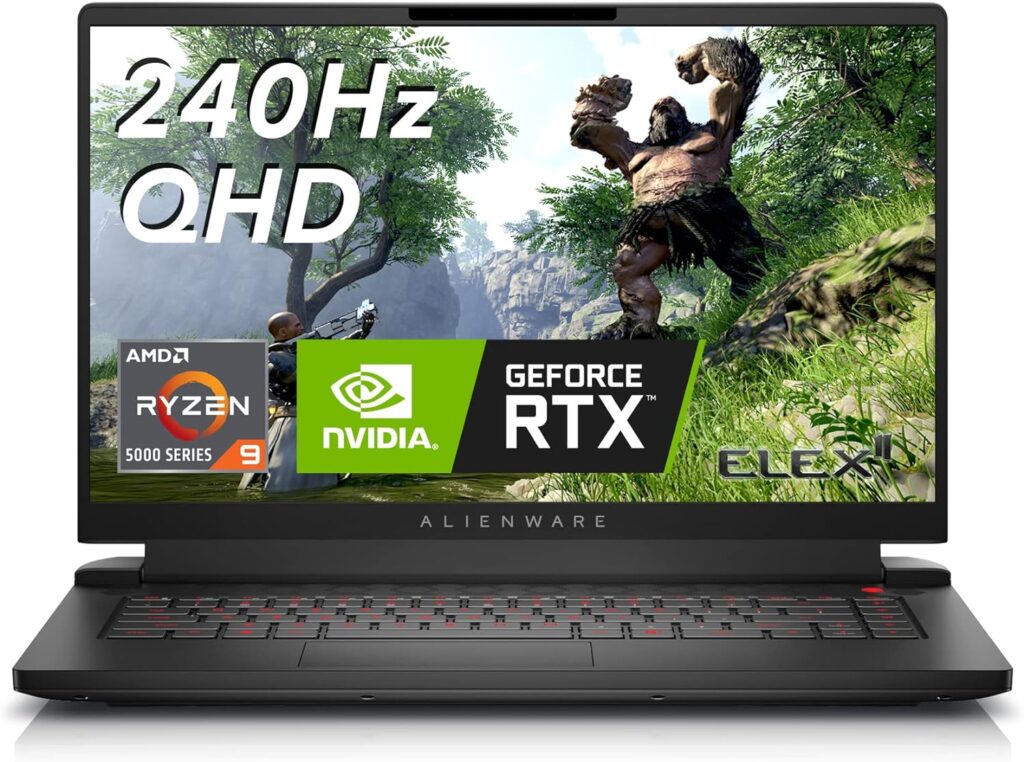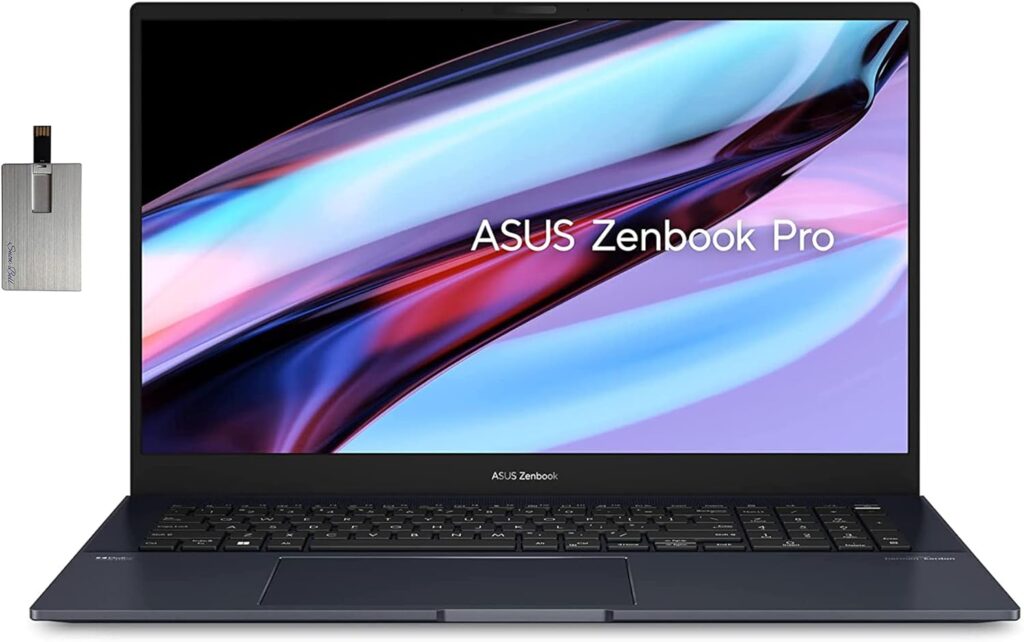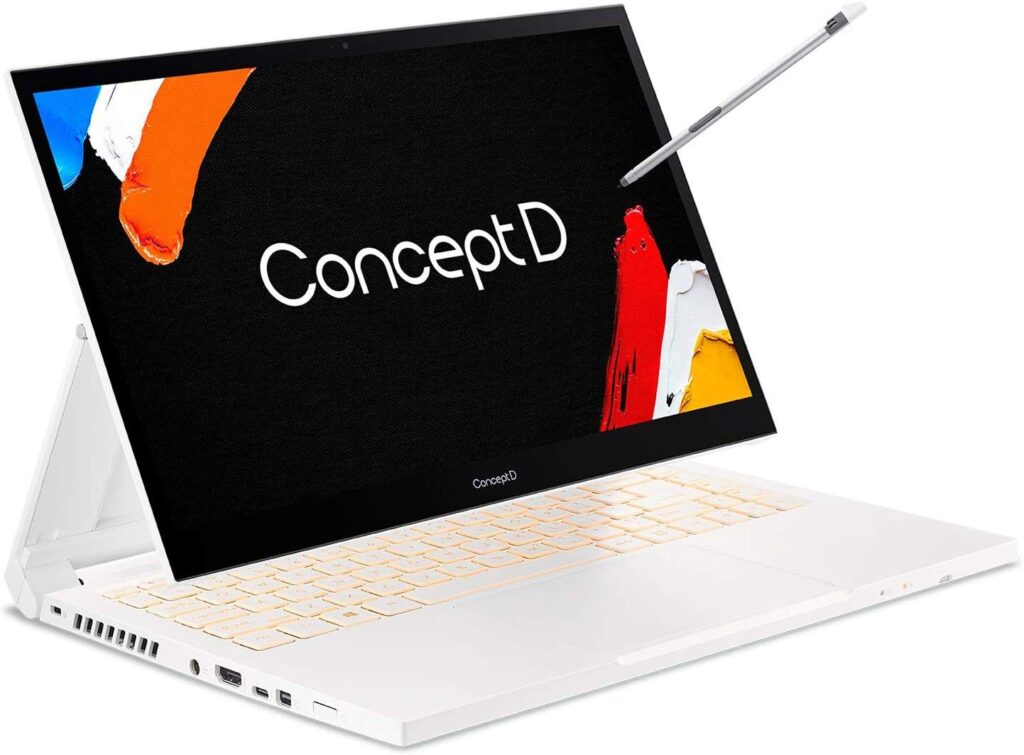In the ever-evolving world of architectural visualization, Lumion stands out as a pivotal software that brings architectural designs to life. As we embrace 2024, the landscape of technology continues to shift, bringing forward an array of laptops designed to not only meet but exceed the demands of Lumion. For architects, students, and visualization professionals, selecting the right laptop is more than a matter of convenience—it’s about harnessing the power to transform ideas into visually stunning presentations.
Acknowledging the importance of staying current, we’ve meticulously updated our guide to spotlight the latest laptops tailor-made for Lumion. Our selections hinge on a thorough assessment of essential features such as processing strength, graphics capabilities, memory, storage, display attributes, and mobility, ensuring you find a laptop that complements your creative workflow.
Before we delve into the specifics, let’s offer a snapshot of our top recommendations for 2024, each accompanied by jump links for detailed evaluations:
| Rank | Make/Model | Best For |
| 1. | Alienware m15 R7 | Best Overall Performance |
| 2. | Razer Blade 15 | Best for Power |
| 3. | ASUS ZenBook Pro 17 | Best for Large Display Projects |
| 4. | Acer ConceptD 3 Ezel | Best for Travel |
| 5. | HP Omen 16 | Best for Budget-Conscious Users |
Now, let’s explore what it takes to run Lumion efficiently and how these laptops stack up against those needs.
Key Requirements for Running Lumion
Lumion is known for its ability to produce real-time, high-quality architectural renders, demanding robust system specifications to function seamlessly. Here’s what to consider:
Operating System: A 64-bit version of Windows 10 or 11 is essential for Lumion, ensuring compatibility and smooth performance.
Processor: Lumion benefits from a high-performance, multi-core processor. For complex scenes, opting for a CPU with 8 cores or more can dramatically improve rendering times.
Memory (RAM): A minimum of 16 GB RAM is required, though 32 GB or more is recommended for handling detailed scenes without a hitch.
Graphics Card: A dedicated graphics card with at least 6 GB of VRAM is crucial. High-end cards from NVIDIA or AMD can significantly enhance rendering quality and speed.
Storage: An SSD (Solid State Drive) is preferable for its fast data access speeds, essential for quick loading times and smooth operation. A minimum of 20 GB of free disk space is advised, with more space beneficial for larger projects.
Display: A resolution of 1920 x 1080 is the minimum requirement, but higher resolutions and color accuracy will improve the visual editing experience.
Additional Considerations for Students and Professionals
Budget: While performance is key, finding a laptop that fits your budget without compromising on necessary specs is crucial.
Portability: For those constantly on the move, a lightweight and compact laptop can be a game-changer.
Battery Life: Extended battery life is a boon for long hours of work, especially when access to power outlets is limited.
Durability: A laptop that can withstand the rigors of daily use is essential, particularly for students and professionals working in various environments.
Equipped with this knowledge, selecting a laptop becomes a strategic decision tailored to enhance your Lumion experience. Each of our recommended laptops excels in specific areas, ensuring that whether you’re focusing on intricate details or broad architectural scenes, there’s a perfect match for your needs.
Let’s now dive into the detailed reviews of each laptop, highlighting their strengths and potential limitations, to guide you towards the ideal choice for bringing your architectural visions to vibrant life.
Welcome to your updated guide to finding the ultimate Lumion companion in 2024—where technology meets creativity, empowering you to breathe life into your designs like never before.
Alienware m15 R7

Pros:
- Powerful Processor: The Ryzen 9’s 4.9 GHz processing power is ideal for Lumion, ensuring smooth operation and fast rendering times for complex 3D scenes.
- High-Speed RAM: 32 GB of DDR5 RAM with a 4800 MHz memory speed enhances performance in Lumion, facilitating better multitasking and handling of large models and environments.
- Exceptional Graphics: The NVIDIA GeForce RTX 3070 Ti with 8GB of VRAM delivers the high-end graphical performance required for Lumion’s real-time rendering and detailed visualization, providing crisp and immersive visual experiences.
- Superior Display Quality: The 15.6-inch screen with a 2560 x 1440 resolution offers sharp, detailed visuals, making it easier to fine-tune textures and lighting in Lumion projects.
- Ample Storage: A 1 TB SSD provides plenty of space for storing Lumion projects and assets, ensuring quick loading and saving times, which is essential for workflow efficiency.
- Robust Connectivity: Equipped with three USB 3.0 ports and advanced wireless connectivity options, it facilitates seamless data transfers and easy peripheral connections.
Cons:
- Portability Challenges: Weighing 5.93 pounds, it’s relatively heavy, which might be a drawback for users who frequently work on site or in different locations.
- Limited Battery Life: The high-performance specifications can drain the battery quickly, especially when running demanding software like Lumion, which might limit its use during fieldwork or long meetings without access to a power source.
- Potential for Noise: High-load scenarios, such as rendering in Lumion, may cause the cooling fans to operate loudly, which could be distracting in quiet environments.
- Cost Consideration: High-end features and performance come at a premium, making the Alienware m15 R7 a significant investment, particularly for students or freelance professionals.
Razer Blade 15

Pros:
- High-Performance Processor: Equipped with a 5.2 GHz Intel Core i7 processor, the Razer Blade 15 offers exceptional performance for Lumion, ensuring smooth rendering and efficient operation even with complex scenes.
- Advanced Graphics: The NVIDIA GeForce RTX 4060 with 8GB of VRAM is perfectly suited for Lumion, providing ample power for real-time rendering, detailed textures, and intricate lighting effects, all essential for high-quality architectural visualization.
- Fast Memory: 16 GB of DDR5 RAM with a 5200 MHz memory speed supports rapid data processing, allowing Lumion to run smoothly and efficiently, especially when working on large projects.
- High-Resolution Display: A 15-inch screen with a 2560 x 1440 resolution offers sharp, detailed visuals, making it easier to fine-tune and review your Lumion projects with precision.
- Solid State Drive: With a 1 TB SSD, this laptop provides plenty of storage for all your Lumion projects and assets, coupled with fast read and write speeds for efficient project loading and saving.
- Lightweight and Portable: Weighing just 4.54 pounds and with dimensions of 13.98 x 9.25 x 0.67 inches, the Razer Blade 15 is designed for mobility, making it an excellent choice for professionals and students on the go.
- Connectivity: With three USB 3.0 ports, the Razer Blade 15 facilitates easy connection to peripherals and external storage solutions, enhancing your Lumion workflow.
Cons:
- RAM Capacity: While 16 GB of DDR5 is sufficient for many tasks, more complex Lumion projects might benefit from additional RAM, especially for ultra-detailed environments or multitasking with other resource-intensive applications.
- Battery Life: The high-end CPU and GPU, along with the laptop’s slim profile, can impact battery life, especially when using Lumion extensively without a power source, potentially limiting mobility.
- Noise and Heat: Under heavy loads, such as when rendering scenes in Lumion, the laptop’s fans can become noticeable, and the system may generate significant heat, which could be a consideration in quiet or confined working spaces.
- Price Point: As with most high-end laptops designed for gaming and professional work, the Razer Blade 15 comes with a premium price tag, which might be a significant consideration for students or professionals with a tight budget.
ASUS Zenbook Pro 17

Pros:
- Large High-Resolution Display: A 17.3-inch screen with a 2560 x 1440 resolution offers ample workspace and sharp visuals, critical for the detailed work involved in Lumion projects. This larger screen size enhances productivity and the overall design experience.
- Powerful Processor: Powered by a 3.3 GHz AMD Ryzen 9 processor, the ZenBook Pro provides robust performance for Lumion, ensuring efficient handling of complex models and environments.
- Ample Memory and Storage: With 16 GB of LPDDR5 RAM and a massive 2 TB SSD, this laptop is well-equipped for multitasking and large Lumion projects, providing quick access to files and smooth operation.
- Dedicated Graphics: The NVIDIA GeForce RTX 3050 graphics card with dedicated VRAM supports Lumion’s demanding graphics requirements, enabling detailed rendering and smooth real-time visualization.
- Lightweight and Portable: Weighing just 3.97 pounds and with a slim profile of 0.74 inches, the ZenBook Pro is designed for mobility, making it an excellent option for architects and designers who work in different locations or on the go.
- Operating System: Comes with Windows 11 Pro, offering advanced features and security, which is beneficial for professional use and compatibility with the latest software updates.
Cons:
- Graphics Performance: While the RTX 3050 is capable, it may not offer the same level of performance as higher-end GPUs for the most demanding Lumion scenes, particularly those with extensive lighting effects and high-resolution textures.
- RAM Limitations: The 16 GB of RAM, although sufficient for many tasks, might fall short for the most complex and resource-intensive Lumion projects. Users might need to manage their workflow and project complexity to ensure smooth performance.
- Thermal Management: High-performance components in a slim chassis can lead to heat accumulation under heavy loads, such as rendering in Lumion. Users should be mindful of ventilation and operating conditions to maintain optimal performance.
- Price vs. Performance: The balance between the ZenBook Pro’s price and its specifications, especially the GPU, may require consideration. Users should evaluate whether the laptop meets their specific Lumion workload demands in relation to its cost.
Acer ConceptD 3 Ezel

Pros:
- Versatile Design: The ConceptD 3 Ezel’s convertible design with a 14-inch display offers flexibility for architects and designers, enabling easy presentations and collaborative sessions. The 1920 x 1080 resolution ensures crisp visuals for detailed work.
- Solid Processor: Equipped with an Intel processor reaching speeds up to 5 GHz, this laptop can competently handle Lumion’s requirements, supporting smooth modeling and rendering processes.
- Dedicated Graphics: The NVIDIA GeForce GTX 1650 with 4 GB of VRAM provides dedicated graphics power for Lumion, capable of producing quality renders and supporting real-time visualization with moderate complexity.
- Ample Battery Life: With an average battery life of 14 hours, the ConceptD 3 Ezel stands out for its ability to support extended work sessions away from a power source, a significant advantage for professionals on the move.
- Lightweight and Portable: Weighing just 3.81 pounds, this laptop is designed for mobility, making it an excellent choice for architects and designers who require a powerful device that’s easy to carry to meetings or site visits.
- Connectivity: Three USB 3.0 ports provide ample connectivity for external devices and data transfer, enhancing workflow efficiency.
Cons:
- Graphics Performance: While the GTX 1650 is a solid performer, it may not handle Lumion’s most demanding scenes with heavy textures or complex lighting effects as efficiently as higher-end GPUs.
- RAM and Storage: With 16 GB of DDR4 RAM and a 512 GB SSD, the ConceptD 3 might find itself stretched thin on larger Lumion projects or multitasking with other resource-intensive applications, potentially affecting performance.
- Screen Size: The 14-inch screen, while offering high portability, may feel limiting for users accustomed to larger displays for detailed architectural work, potentially impacting the ease of multitasking and precision in design adjustments.
HP Omen 16

Pros:
- Powerful Processor: Featuring a 3.8 GHz Intel Core i9 processor, the HP Omen 16 offers robust performance for Lumion, ensuring smooth and efficient rendering of complex 3D scenes and models.
- High-Performance Graphics: Equipped with an NVIDIA GeForce RTX 3060 with 6 GB of VRAM, this laptop provides excellent graphics capabilities, essential for high-quality real-time visualization and rendering in Lumion.
- Large Storage Capacity: With a 2 TB SSD, users have ample space to store large Lumion projects, assets, and other software, ensuring quick access and efficient workflow management.
- Impressive Display: The 16.1-inch screen offers a spacious and immersive viewing experience, beneficial for detailed architectural work and presentations in Lumion.
- Sufficient Connectivity: Three USB 3.0 ports provide plenty of options for connecting external devices, aiding in a seamless workflow with peripherals such as external drives and monitors.
- Designed for Performance: The HP Omen series is known for its cooling solutions, ensuring that the laptop remains at optimal performance even under heavy loads, which is crucial for long Lumion rendering tasks.
Cons:
- Portability Considerations: Weighing 5.2 pounds, the HP Omen 16 is relatively portable for a high-performance laptop but may still be cumbersome for users who need to frequently move between locations.
- Battery Life: The powerful components, particularly the Core i9 processor and RTX 3060 GPU, can drain the battery quickly during intensive tasks like rendering in Lumion, limiting mobility without access to a power source.
- Potential Overkill for Basic Use: For users with less demanding Lumion projects, the high-end specifications (and associated cost) of the HP Omen 16 might be more than necessary, suggesting that a less powerful laptop could suffice.
- Noise Under Load: While the cooling system is effective, it can get noisy under heavy usage, such as during long rendering processes, which might be a distraction in quiet environments.
Find Your Perfect Architectural Companion
In conclusion, whether you’re delving into complex architectural visualizations or simply seeking a reliable laptop that marries power with portability, our curated list offers something for every type of user. From the unparalleled performance of the Alienware m15 R7 to the travel-friendly Acer ConceptD 3 Ezel, each laptop has been selected for its unique ability to support architects and designers in their creative endeavors.
Recognizing that each project has its own set of demands and each architect their preferences, we invite you to explore our comprehensive guide on the best laptops for architecture. This guide expands on our selections here, providing deeper insights and a wider range of options to ensure you find the perfect tech companion to bring your architectural visions to life.
Happy designing, and here’s to finding the laptop that not only meets your requirements but exceeds your expectations in the dynamic world of architecture.

